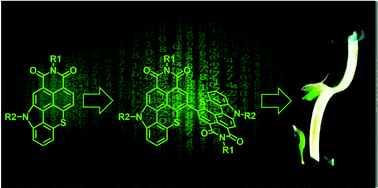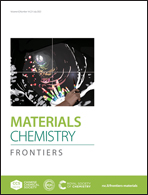Thiochromenocarbazole imide: a new organic dye with first utility in large area flexible electroluminescent devices†
Abstract
The N-annulation of a benzothioxanthene imide (BTI) derivative is demonstrated herein affording the unprecedented thiochromenocarbazole imide (TCI). The impact of this chemical modification on the molecular structure and optoelectronic properties is investigated using a combination of single crystal X-ray diffraction, optical absorption spectroscopy, photoluminescence spectroscopy, cyclic voltammetry, and theoretical calculations. Comparison with the parent compound highlights the great potential of the newly synthesized molecule for applications in electroluminescent devices. As a proof of concept and seminal use, TCI-based dimers were successfully prepared and embedded in solution-processed organic light emitting devices (OLEDs). With improved solubility in non-halogenated solvents and good film forming capabilities, large active area (160 mm2) OLEDs, fabricated in ambient air on flexible substrates via slot-die-coating, were demonstrated.



 Please wait while we load your content...
Please wait while we load your content...